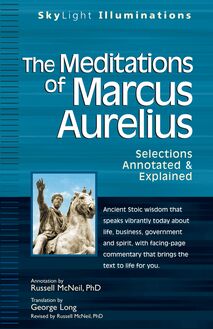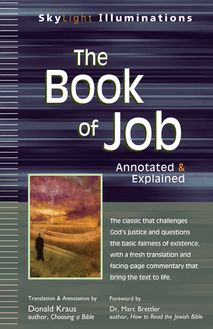The Art of War—Spirituality for Conflict , livre ebook
110
pages
English
Ebooks
2010
Vous pourrez modifier la taille du texte de cet ouvrage
Obtenez un accès à la bibliothèque pour le consulter en ligne En savoir plus
Découvre YouScribe en t'inscrivant gratuitement
Découvre YouScribe en t'inscrivant gratuitement
110
pages
English
Ebooks
2010
Vous pourrez modifier la taille du texte de cet ouvrage
Obtenez un accès à la bibliothèque pour le consulter en ligne En savoir plus
Publié par
Date de parution
17 novembre 2010
Nombre de lectures
0
EAN13
9781594733253
Langue
English
Discover the spiritually incisive strategies for peacefully resolving conflict
in this masterpiece of military strategy.
Written 2,500 years ago by Chinese general Sun Tzu, The Art of War is a poetic and potent treatise on military strategy still in use in war colleges around the world. Yet its principles transcend warfare and have practical applications to all the conflicts and crises we face in our lives—in our workplaces, our families, even within ourselves.
Thomas Huynh guides you through Sun Tzu's masterwork, highlighting principles that encourage a perceptive and spiritual approach to conflict, enabling you to:
• Prevent conflicts before they arise
• Peacefully and quickly resolve conflicts when they do arise
• Act with courage, intelligence and benevolence in adversarial situations
• Convert potential enemies into friends
• Control your emotions before they control you
Now you can experience the effectiveness of Sun Tzu's teachings even if you have no previous knowledge of The Art of War. Insightful yet unobtrusive facing-page commentary explains the subtleties of the text, allowing you to unlock the power of its teachings and help prevent and resolve the conflicts in your own life.
Foreword by Marc Benioff ix
Preface by Thomas Cleary xv
Introduction xxiii
A Note on the Translation xxxvii
1. Calculations 3
2. Doing Battle 17
3. Planning Attacks 29
4. Formation 47
5. Force 57
6. Weakness and Strength 67
7. Armed Struggle 83
8. Nine Changes 99
9. Army Maneuvers 111
10. Ground Formation 131
11. Nine Grounds 149
12. Fire Attacks 179
13. Using Spies 189
Acknowledgments 201
Notes 205
Suggestions for Further Reading 209
Publié par
Date de parution
17 novembre 2010
Nombre de lectures
0
EAN13
9781594733253
Langue
English
To my daughter, Victoria, and nephew, Dustin-and all children-who will lead the world and set it right.
The Art of War-Spirituality for Conflict: Annotated & Explained
2009 Quality Paperback Edition, Second Printing 2008 Quality Paperback Edition, First Printing Annotation and introductory material 2008 by Thomas Huynh Foreword 2008 by Marc Benioff Preface 2008 by Thomas Cleary
All rights reserved. No part of this book may be reproduced or transmitted in any form or by any means, electronic or mechanical, including photocopying, recording, or by any information storage and retrieval system, without permission in writing from the publisher.
For information regarding permission to reprint material from this book, please mail or fax your request in writing to SkyLight Paths Publishing, Permissions Department, at the address / fax number listed below, or e-mail your request to permissions@skylightpaths.com.
Library of Congress Cataloging-in-Publication Data Huynh, Thomas. The art of war-spirituality for conflict : annotated & explained / annotations by Thomas Huynh. p. cm. Includes bibliographical references. ISBN-13: 978-1-59473-244-7 ISBN-10: 1-59473-244-2 1. Peace–Religious aspects. 2. Conflict management–Religious aspects. 3. Sunzi, 6th cent. B.C. Sunzi bing fa. 4. Military art and science. 5. Strategy. I. Title. BL65.P4H89 2008 355.02-dc22 2007052942
10 9 8 7 6 5 4 3 2
Manufactured in the United States of America Cover design: Walter C. Bumford III Cover art: istockphoto.com/grahamnorris
SkyLight Paths Publishing is creating a place where people of different spiritual traditions come together for challenge and inspiration, a place where we can help each other understand the mystery that lies at the heart of our existence.
SkyLight Paths sees both believers and seekers as a community that increasingly transcends traditional boundaries of religion and denomination-people wanting to learn from each other, walking together, finding the way.
SkyLight Paths, Walking Together, Finding the Way” and colophon are trademarks of LongHill Partners, Inc., registered in the U.S. Patent and Trademark Office.
Walking Together, Finding the Way Published by SkyLight Paths Publishing A Division of LongHill Partners, Inc. Sunset Farm Offices, Route 4, P.O. Box 237 Woodstock, VT 05091 Tel: (802) 457-4000 Fax: (802) 457-4004
www.skylightpaths.com
Contents
Foreword by Marc Benioff
Preface by Thomas Cleary
Introduction
A Note on the Translation
1. Calculations
2. Doing Battle
3. Planning Attacks
4. Formation
5. Force
6. Weakness and Strength
7. Armed Struggle
8. Nine Changes
9. Army Maneuvers
10. Ground Formation
11. Nine Grounds
12. Fire Attacks
13. Using Spies
Acknowledgments
Notes
Suggestions for Further Reading
Foreword
by Marc Benioff
As the chairman and CEO of a technology company, I am always thinking about the future. It s somewhat ironic then, that the philosophies and strategies I use to manage salesforce.com were written on slips of bamboo 2,500 years ago.
Larry Ellison, the CEO of Oracle Corporation and my mentor, first introduced me to The Art of War, the Chinese military treatise by Sun Tzu, when I was an executive at Oracle. Fundamentally, the book demonstrates how small armies can defeat larger ones. Larry applied its principles to business with enthusiasm, and in growing Oracle from a small start-up into one of the world s leading software companies, he proved the enduring effectiveness of its insights even in modern circumstances. Sun Tzu s treatise was originally written as a guide for generals in ancient China, but I was amazed by its ability to transcend time and its relevance to leaders of any mission.
So what does an age-old book about warfare and combat have to do with business or personal interactions? A whole lot, it turns out. As Thomas Huynh poignantly illustrates in The Art of War-Spirituality for Conflict: Annotated & Explained , Sun Tzu may have been a general, but he wasn t a warmonger. He was a leader defined by compassion and spirituality, and he possessed a desire for resolution. The Art of War isn t about war so much as it is about the art of winning .
Sun Tzu s original intention, as Huynh explains in the following pages, was to teach a disadvantaged person or persons how to shift the balance of power. Essentially, the book reveals how David can topple Goliath. Since I first read The Art of War more than a dozen years ago, I have applied its concepts to many areas of my life. The tenets of the book provided me with the confidence to enter an industry dominated by much bigger players-and gave us the strategies to render them powerless. Ultimately, it is how salesforce.com took on the entire software industry.
I started salesforce.com in 1999 with an idea to make purchasing and using notoriously onerous business software as simple as using a website like Yahoo! or Amazon.com. At first, we didn t have much more than a good idea. We launched the company in a one-bedroom rented apartment. Our servers were housed in a walk-in closet, our conference room was a balcony, and as we grew, the overflow went into my own apartment next door. (We hung Ethernet cable through the redwood trees to connect the two offices”.) We had no real office, no revenues, and no profits. We didn t even have a market-at that time, there were no phrases like On-Demand” or Software as a Service” to describe what we did.
We had very little compared to our competitors, but it didn t matter. (As Sun Tzu noted, having more resources does not ensure advantage.) What we lacked in terms of accepted ideas and impressive infrastructure, we made up for in energy and passion. We toiled away under pictures of the Dalai Lama and Albert Einstein. From my studies of Sun Tzu, I had learned both the importance of instilling inspiration and how to turn that vision into a reality: in Sun Tzu s own words, One who knows how to unite upper and lower ranks in purpose will be victorious.” I found the way to unite our army” was to pursue an objective of great meaning that was accessible to the masses. We found that purpose with our End of Software” mission. We were not just selling a Customer Relationship Management (CRM) tool, a service that would enable salespeople to sell more effectively-we were changing the way the software industry worked. We were committed to using the Internet to make software easier to use, less expensive, and more successful for our customers. We were evangelizing important values-democratizing an industry and embracing the way of the future.
Evoking innovation as inspiration was important, but there was another effort that was also a great unifier. To be truly successful, companies need to have a purpose bigger than making a profit. We created an integrated philanthropic model that gives 1 percent of our equity, 1 percent of our profits, and 1 percent of our employees time to local and global nonprofit organizations. The Salesforce Foundation opened its first after-school technology center in San Francisco in July 2000 and has since created more than sixty technology centers and media programs in twelve countries where we have offices, including Japan, Ireland, and Singapore. The Foundation has also made meaningful contributions to disaster relief efforts in the United States and abroad. All of this was accomplished by the more than seventy thousand hours donated by our two thousand employees who embraced this effort with enthusiasm. By giving employees paid time off to volunteer, we have also seen a secondary gain. With an opportunity to do more than change the way businesses manage and share information, our employees have a greater sense of personal pride and satisfaction-and they are happier and therefore more productive at work.
While there have been modern critics of compassionate capitalism,” Sun Tzu understood that being practical and being compassionate are not mutually exclusive. In fact, it is self-serving to be compassionate, he said, for preserving a defeated army intact helps quell resentment-and ease later interactions. We ve found this wisdom to be true. How can we thrive as a company if the community we operate in falters? We can t: many of our employees, partners, customers, and shareholders come from the communities the Foundation serves. We need to ensure that our local community succeeds for us to succeed and we need to ensure that our global community thrives for us to grow. Acting in a way that is both practical and compassionate has proved to be a secret weapon for success.
Another pivotal strategy for success was to remain aware of our surroundings and adaptable to change. Instead of fighting change, like many of our opponents, we greeted it. This was our mantra from the beginning when countless people told us an On-Demand premise would never work. A key figure in the CRM industry even proclaimed, audaciously, that our young company would fail within a year. Nevertheless, we decided to pursue the idea, and ultimately came to compete against this dominant player.
Sun Tzu advised a cool and rational approach to conflict, but this particular adversary took the battle for business personally, which put him and his company at a disadvantage. Since our start-up was too small to overpower the competition, we had to devise creative ways to outsmart them; many of the strategies stoked our adversary s emotions. One time, we placed people outside their annual conference to peacefully wave signs that said NO SOFTWARE” and The Internet Is Really Neat … Software Is Obsolete!” Rather than coolly seeing this as a business and marketing tactic, their executives reacted emotionally and called the police-only adding fuel to the fire and garnering more press for us. Another time we rented all the taxis our competitors needed to get to a conference in Europe. Even their executives were left with no choice other than to take our rides, which we provided as a f














